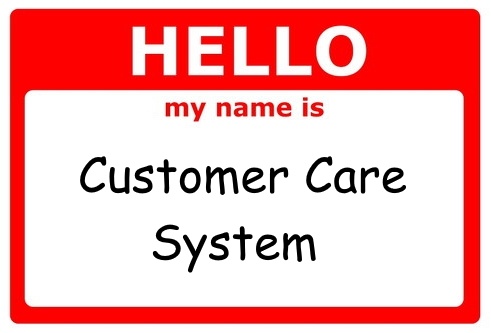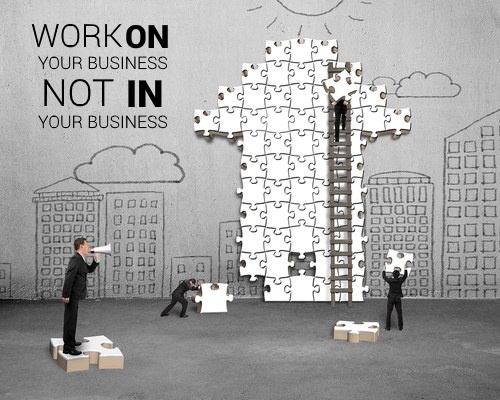You now understand that systems are the solution to your business challenges. Good systems increase efficiency, accomplish objectives, and give customers what they want every single time. Your business accounting should be the master system that measures the effectiveness of all your business processes—the operations of your business.
Think of your business as you would the human body. The body is a complex organization that has an important job to do. It must perform with exactness and on tight schedules. To accomplish this, the body uses systems that work together—the circulatory system, respiratory system, digestive system, nervous system, and so forth. The brain manages all of these systems and works to keep the body healthy and functioning properly.
The brain of your business is the accounting system. It processes all of the data related to the activities of the business and provides owners with strategic information to drive profitability and growth. “Managing by the numbers” is the method successful owners and managers use to operate a business that is also healthy and functioning properly.

Discover the true value of accounting
In many small to mid-size businesses, accounting is seen as the system used for paying the bills, reconciling the bank, invoicing customers, or preparing a tax return. It should be much more. It should be the system for gathering business intelligence.
Renowned business authority Peter Drucker says, “You cannot manage what you cannot measure.” To which Michael Dell, of Dell Computers, adds, “Anything that can be measured can be improved.” Business accounting is the measuring and reporting arm of the business.
Accounting information reveals the strengths and weaknesses of a business operation (see SWOT Analysis). It tells the business owner what went wrong in the past and what can be done to improve in the future. Accounting systems reduce large quantities of complex data to simple and understandable information. This information contains the seeds of solutions for all business problems and is the basis for making mission-critical decisions.
Accounting systems bring all the resources of the business to bear on the creation of profit, the lifeblood of the business. When an accounting system is utilized properly it can make poor men rich. If ignored, it can make rich men poor. It is the most under-utilized tool of the average small-business owner. Even professional accountants do not always extract its full value.
Let’s take a closer look. Business activities generate numbers, regardless of whether the owner pays attention to them. These activities are the specific daily processes and systems that create sales, produce products, train employees, service customers, and so forth. Strong accounting systems organize the numbers to produce a wealth of relevant information for running the business. For example, business intelligence may tell owners and managers:
- “The company must do $100,000 per month to break-even.”
- “It takes an average of 52 days to collect accounts receivable.”
- “The plant is running at 76% of its capacity.”
- “Sales are up by 8% over last year.”
- “Labor costs are running 2% higher than budgeted.”
- “It costs an average of $400 per sales lead.”
- And much more!
The steady flow of information creates a reservoir of knowledge from which business decisions can be made. Good decisions will save or earn the owner far more than the cost of acquiring the information. The accounting system may tell the owner to hire a salesman, and what the new break-even point will become. It may tell him to discontinue an unprofitable product line, buy a new piece of machinery or raise product prices, and by how much. He or she will benefit by knowing the optimum level of inventory to stock or what should be the expected result of more advertising.
Owners make the best decisions when information tells them the financial effect their decision will have on the business—before they ever spend a dime! The outcome of managing by the numbers is better management, control, profitability, and customer satisfaction.
Counting vs. Accountability
Many business owners mistakenly think the root of the word “accounting” is “counting.” They know their sales for the month, the bank balance, and how much money they owe vendors. Savvy business owners understand the root of “accounting” is not “counting,” but “accountability.” Each business system or process is accountable for a planned result.
Ask yourself:
- “Is my lead generation system producing the expected number of sales leads?”
- “Does our quality control system keep product returns at an acceptable level?”
- “Is my employee incentive system boosting productivity?”
Effective accounting ensures that all business activities are working together to produce a profit. “Counting,” or bookkeeping, is an overhead expense of doing business. “Accounting” is an investment that pays big dividends. Don’t be without it!
Strategic information leads to financial control
To develop the perfect business requires a disciplined and systematic course of action. The business owner must understand where he is at, where he is going, and how he is going to get there. He uses strategic information and systems to achieve financial control. If managed and grown properly, the business will be profitable, reward stakeholders, and create financial and personal freedom for owners. Accounting plays a central role.
Managerial accounting is the art and science of managing by the numbers. Regardless of who does your accounting, you need it done. You need it done right. And you need it done right now!
One final point: Every business has one or two “key numbers” that drive its economic engine. If you have knowledge and control of these numbers, everything else falls into place. What are your key performance indicators? If you do not already have them identified, do so now, and get help if necessary. Attention to these key numbers will make all the difference to your success.
By the way, if “numbers” aren’t your thing, which describes most people, be humble. Hire a “numbers person.” If you get the right person, I promise it will be worth it!
The next major systems you must develop or refine are marketing and sales. A business will not exist for long if it does not have an effective system for getting customers in the door.
Step 5: Become an Obsessed Marketer
Download PDF ebook: 10 Easy Steps to Grow the Perfect Business


















